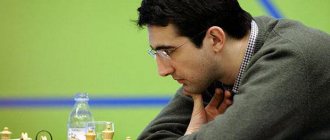Behaviorism is a psychological theory based on human behavior, which is a set of reactions to various stimuli from the outside. The birth date of the concept is considered to be 1913, when its founder, J. Walter, published the first article on psychology from the point of view of a behaviorist. Representatives of the theory interpret learning as the basis of human development, and consider the behavior of humans and animals as the subject of psychology. They conducted many experiments that showed the possibility of learning one or another behavioral strategy. However, many of them were carried out on animals, and the conclusions extended to humans. Since behaviorists did not highlight any special differences between the behavior of animals and humans.
Founder of the behavioral approach
J. Watson is considered the founder of behaviorism. He called his goal the reconstruction of psychology as a science into a more accurate and objective one, which provides a qualitative and quantitative assessment of the properties of the psyche. He also created the fundamental scheme for learning behavior, which is the subject of study in behaviorism: a stimulus causes a response. That is, he said that the behavior of any person depends only on what stimuli he encounters and how he reacts to them. In addition, he was confident that using this scheme, any baby could be raised into the kind of person who would be most in demand in society.
Research by Pavlov and Thorndike
I.P. Pavlova, one might say, was the predecessor of the theory of behaviorism, since on the basis of his theory of reflexes the concept of behavior was created. He worked with animals and found out that they have certain unconditioned reflexes, embedded in the form of instincts and determining the behavior of the creature. He also revealed the possibility of artificially developing conditioned reflexes, on the basis of which the behavior of the animal as a whole is built.
E. Thorndike believed that the starting point for the formation of a reaction is not just an external stimulus, but a problematic situation that causes discomfort or pleasure in a person. It forces him to move in the right direction and perform the necessary actions to get rid of discomfort or obtain pleasant sensations. If the stimulus does not evoke either positive or negative emotions in the individual, then the reaction may not follow. Thorndike's views significantly complemented the theory of behaviorism, but his ideas were excluded from the classical concept, since its founders could not allow scientists to take into account the subjective and physiological characteristics of the individual when studying humans.
Basics of Personality Theory
| Psychological behaviorism personality theory |
| Previous Behaviorists Ivan Petrovich Pavlov Edward L. Thorndike John B. Watson Skinner Clark L. Hull Author Arthur W. Staats Basic works |
| Psychology portal |
Description
Staats suggests radical behaviorism is insufficient because, in his opinion, psychology needs to combine traditional knowledge of human behavior with behaviorism. He called this behaviorizing psychology in a way that allows psychological behaviorism to deal with topics typically not covered in behaviorism, such as personality. According to this theory, personality consists of three large and complex behavioral repertoires
:
- sensorimotor repertoire, including basic sensorimotor abilities as well as attentional and social skills;
- language-cognitive repertoire, including receptive language, expressive language, and receptive-expressive language;
- emotional and motivational repertoire, including positive and negative forms of emotional reactions that guide all human behavior.
The child begins life without basic behavioral repertoires. They are acquired through comprehensive learning, and as this happens, the child becomes able to respond adequately to various situations.
If training at the beginning includes only basic conditioning, and repertories are acquired, the child's learning improves by now promoting repertoires that are already functional. The way a person perceives the world depends on his/her repertoire. The individual's environment to present results in learning the basic behavioral repertoire (BBR). An individual's behavior is a function of the life situation and the person's BBR. BBRs are dependent and independent variables because they are the result of learning and cause behaviors that make up a person's personality
According to this theory, the biological conditions of learning are important. Biology provides mechanisms for learning and executing behavior
For example, a severely brain damaged child will not learn BBRs in a normal manner.
According to Staats, a biological organism is the mechanism by which the environment produces learning that results in the basic behavioral repertoire that constitutes personality. In turn, these repertoires, when acquired, modify the biology of the brain by creating new neural connections. Organic conditions influence behavior through affective learning, core repertoire, and sensory processes. The influence of the environment on behavior can be proximal, through the here and now, or distal, through memory and personality. Thus, biology provides the mechanism, learning and the environment provide the content of behavior and personality. Creative behavior is explained by new combinations of behavior caused by new, complex environmental situations. It is the individual's perception of his/her behavior, situation and body. Personality, situation, and the interaction between them are the three main forces that explain behavior. The world affects man, but man also acts both on the Earth and on him/her.
methods
The methodology of psychological behavioral theory contains assessment and treatment methods specifically designed for three behavioral repertoires:
- classical sensorimotor techniques;
- language - cognitive methods (verbal associations, verbal imitation, and verbal-written form);
- emotional - motivational methods (time-out technique).
The essence of the approach
The essence of the behavioral approach is to study and shape human behavior through various stimuli. They can be determined by the environment - an example from life - the experience of a “hungry” time makes a person overly thrifty; or be artificial - for example, an experiment with little Albert, who was artificially made to be afraid of everything white and fluffy. In addition, stimuli can be both physically tangible - extreme heat or cold, physical punishment, frequent hugs; and verbal, coming from the environment - censure or praise. Subjective experiences - emotions, feelings, states - are not denied in behaviorism, but it is believed that they only depend on external influences, and are not determined by them.
Basic provisions of the behavioristic approach
The main provisions of the theory include the following theses:
- The subject of the theory of behaviorism is the study of the behavioral reactions of animals and people to various stimuli and behavior in general.
- The study of behavior and behavioral reactions is carried out through observation.
- All subjective aspects of a person from the physiology and psyche are determined only by his behavior.
- The behavior of a person or animal is a set of reactions to external stimuli.
- If the nature of the presented stimulus is known, then it is possible to almost accurately predict the reaction that will follow. This is the main goal of behaviorism.
- The behavior of living beings is successfully amenable to external regulation and control.
- Behavior is either inherited in the form of unconditioned reflexes, or acquired in the form of conditioned ones.
- Behavior is the result of learning through repeated repetition of stimuli and reinforcement of the response.
- A skill is the result of the formation of conditioned reflexes. Thinking and speech in behaviorism are also considered a skill, and memory is a mechanism that allows you to retain already acquired skills.
- Mental reactions are formed throughout life, that is, learning can begin at any age and continue for an unlimited amount of time.
- Emotions are also reactions to external stimuli.
Motives for occurrence
The theory of behaviorism as a science of behavior was formed against the background of criticism of the most common method of introspection that preceded it in the 19th century, based on self-diagnosis and introspection. Doubts about the accuracy of such science were raised by the low level of objectivity of measurements and the strong disparity in the information received. J. Watson wanted to create a branch of psychology in which data could be accurately measured and objectively studied. The philosophical basis of behaviorism was the theory of J. Locke, who believed that a person is born with pure consciousness, and during his life he receives all the necessary experience that determines his state.
Directions of behaviorism
Initially, there was only classical behaviorism, which viewed behavior as a set of stimuli and reactions. But over time, it became clear that this was not enough to create a full-fledged branch of psychology. As a result, different directions emerged that refined and supplemented the basic scheme of behaviorism. The main theories can be considered in the table.
| Direction | Description |
| Target behaviorism | Its representative is E. Tolman, who included the missing link in the diagram, resulting in the following expression: stimulus - mental activity - reaction. Thus, in mazes, mice did not get to the goal in the way they were taught, but simply ran towards it along arbitrary paths. This means that the goal for them was a higher priority than the learned path; they ran the road that seemed most convenient to them to achieve the goal, which means that before acting, they had time to think about their trajectory at a primitive level. |
| Social behaviorism | The most famous person in this direction of behaviorism is A. Bandura. Here, in the “stimulus-response” formula, social experience and individual psychological characteristics that react to a stimulus began to be taken into account. A. Bandura conducted experiments with three groups of children who, under different conditions, were shown a video recording of another child “bullying” a rag doll. As a result, those who were shown subsequent punishment for aggression did not touch the doll. And those who saw that such actions were not condemned or encouraged showed aggression towards her in the same way as the child in the video presented to him. |
| Neobehaviorism (Radical behaviorism) | The founders of this direction were B. Skinner, the author of the concept of operational behaviorism, and K. Hull. Here the stimulus-response framework is expanded to include various intervening variables that have a significant influence on the formation of behavior. For example, such variables can be considered encouragement, ignoring and punishment for a particular reaction. |
Behavioral psychotherapy
Behaviorism as a theoretical branch of psychology was transformed into behavioral psychotherapy, which became one of the leading methods of problem solving.
Cognitive-behavioral therapy is aimed at solving psychological problems that were caused by incorrect or harmful beliefs and affirmations.
At the beginning of the last century, Edward Thorndike formulated two basic laws that are successfully applied in modern psychotherapeutic practice:
- Law of effect: the stronger the pleasure that a certain action causes, the stronger the stimulus-response connection; accordingly, negatively colored emotions make this connection weaker;
- Law of exercise: repeating an action makes it easier to perform in the future.
In this practice, the patient plays a leading role: he answers the psychologist’s questions and performs the recommended exercises. During treatment, family members take an active part in therapeutic activities: they support the patient and help him do his homework.
Behaviorism introduced the principle of “minimal intrusion” into this area of psychotherapy. This means that the doctor should intervene in the patient’s life only to the extent necessary to solve a specific problem. The starting point is a specific problem that requires resolution (the “here and now” principle).
Behavioral therapy has many methods in its arsenal:
| Name | The essence of the method |
| Simulation training | The patient imitates the behavior pattern. A hero of a literary work, a film, or a famous person can be taken as a model. Sometimes additional incentives can be used. |
| Role training | The purpose of the role-playing game: the patient experiences a difficult situation for him, adapts to it, and looks for solutions. The use of this method in groups of patients brings good results. |
| Unlearning methods | Formation of persistent hostility to any “stimulus” |
| Elimination methods | The patient must learn to completely relax at a time of stress, which is reinforced by positive influence from the outside (pleasant music, image) |
| Implosion therapy | The patient is repeatedly exposed to negative factors, causing stress. Over time, he “gets used” to the unpleasant situation and it loses its severity |
Pros and cons of behaviorism
The advantages of the behavioristic approach are that for its time it was a new and very progressive movement in psychology. During his era, a large number of new discoveries were made and many experiments significant for the development of science were carried out. On the basis of behaviorism and using some of its ideas, other areas of psychology and psychotherapy arose, and some theses of behaviorism are used in pedagogy.
At the same time, the consideration of man in behaviorism was one-sided: it focuses only on the study of external manifestations. Representatives of this direction denied the influence of subjective data on behavior - characteristics of the psyche, emotional state, their own desires and aspirations, as well as the influence of society and social attitudes. They also claimed that they could influence the behavior of any person; they just needed to find suitable stimuli and reinforce the reaction. In addition, a criticism of behaviorism was that it did not see much difference between human and animal behavior.
Reaction of the scientific world
John Watson can rightly be called the leader of the behaviorist movement. Psychologists liked his ideas so much that his worldview gained a lot of fans and supporters. The popularity of the method of classical behaviorism is also explained by its simplicity: no additional research, simple observation and analysis of the results.
The most famous students are William Hunter and Karl Lashley. They were working on studying delayed response. Its essence was to provide a stimulus “now” and obtain a response “later”. The most common example: a monkey was shown which of two boxes contained a banana; then they temporarily placed a screen between the animal and the treat, removed it, and waited for the task to be solved. Thus, it was proven that primates are capable of delayed reactions.
Carl Lashley later took a different path. He studied the relationship between responses to stimuli and various parts of the central nervous system. In his experiments on animals, he developed a specific skill and then removed various parts of the brain. He wanted to find out whether the persistence of skills depended on areas of the cerebral cortex. During his experiments, it was found that all parts of the brain are equal and interchangeable.
In the 40s of the same millennium, behaviorism was transformed and gave birth to a new direction in psychology - neobehaviorism. It appeared because classical behaviorism could not provide comprehensive answers to constantly arising questions. Watson did not take into account that human behavior is much more complex than animal behavior. And one stimulus can cause a huge number of “responses”. Therefore, neobehaviorists introduced “intervening variables”: factors influencing the choice of behavior.
The father of neobehaviorism is B.F. Skinner. His worldview differed from the classical ideas of behaviorism in that he did not consider unconfirmed objective data to be scientific. He did not set himself the goal of education; he was more interested in the motives and motivations driven by a person.









